No products in the cart.
NEWS
Cultivating Your Own Edible Garden: A Comprehensive Guide
Embarking on the journey of growing your own food is incredibly rewarding. An edible garden, whether a few pots on a balcony or a sprawling backyard plot, connects you with nature, provides fresh, flavorful produce, and offers a sense of accomplishment. From juicy strawberries and vibrant tomatoes to aromatic herbs and hearty potatoes, the possibilities are endless. This guide, drawing upon years of agricultural expertise and practical experience, will walk you through the essentials of establishing and maintaining a thriving edible garden, suitable for both beginners and seasoned green thumbs looking to refine their techniques.
Planning Your Edible Sanctuary
Success in an edible garden begins with careful planning. Consider your available space, local climate, and the amount of sunlight different areas receive. Most fruiting plants, like tomatoes and strawberries, thrive on abundant sunshine, typically requiring at least 6-8 hours per day. However, some leafy greens and herbs can tolerate partial shade. Understanding the light conditions is crucial for plant selection and placement.
Soil is the foundation of your garden. Healthy soil provides the nutrients and structure plants need to flourish. Ideal soil for most edibles is well-draining, rich in organic matter, and has a balanced pH. Preparing your soil by adding compost or other organic amendments is key to boosting fertility and improving texture. Different plants have specific soil preferences; for example, tomatoes benefit from a nutrient-rich, slightly acidic to neutral soil blend.
Deciding what to plant depends on your preferences and the conditions you can provide. Think about what you enjoy eating and what grows well in your region during different seasons. Researching planting times for specific vegetables is vital; planting tomatoes, for instance, at the right temperature and size ensures they get the best start for an abundant harvest. Don’t forget to consider fruits like strawberries or even fruit trees suited for your climate and soil conditions, such as varieties that can tolerate wetter areas if needed.
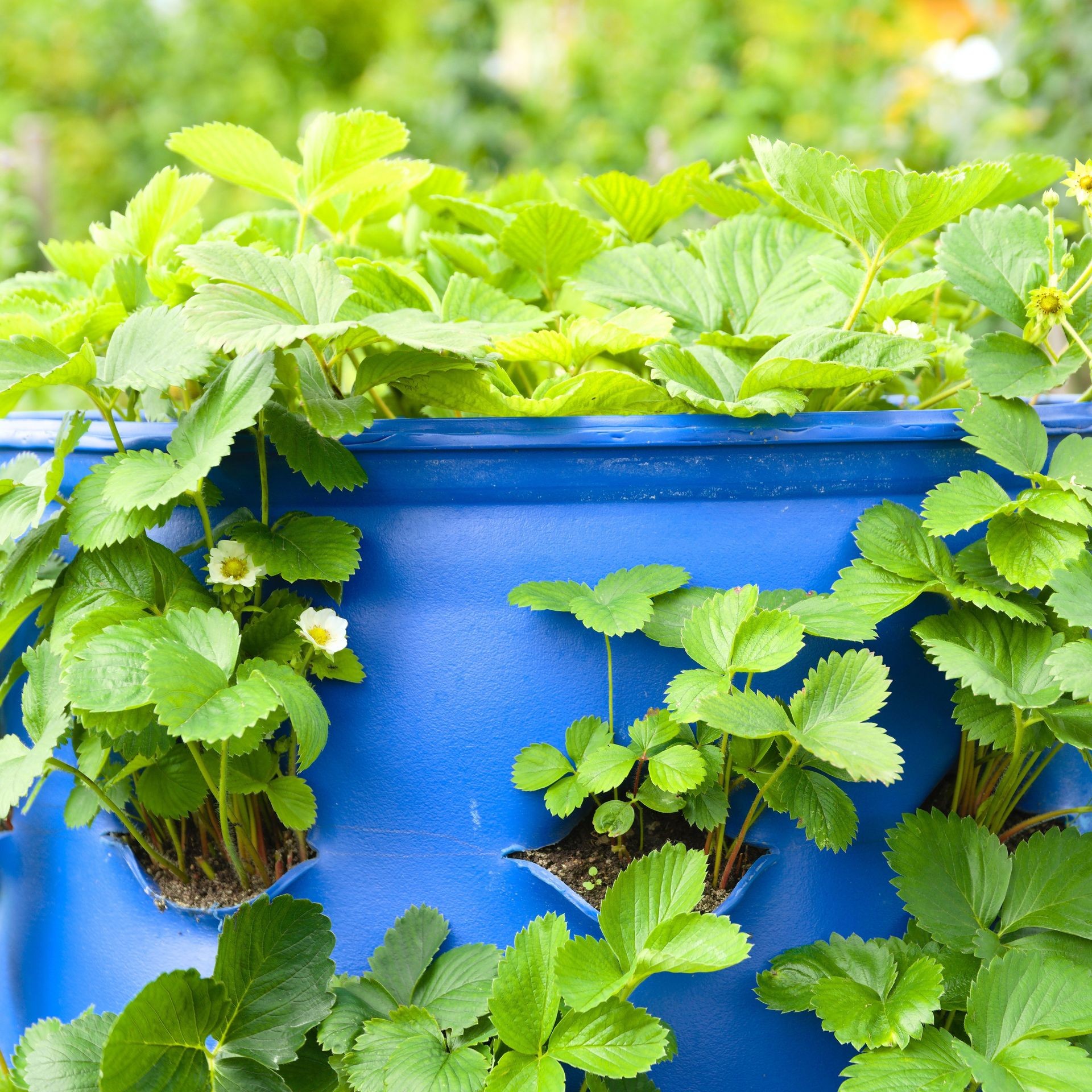 strawberry plant with no fruit
strawberry plant with no fruit
Essential Planting and Care Techniques
Once your plan is in place, it’s time to get your hands dirty. Proper planting depth and spacing are important for healthy growth and air circulation. For many plants, starting seeds indoors or purchasing seedlings can give you a head start, especially for crops with longer growing seasons.
Ongoing care involves consistent watering, feeding, and mulching. Watering needs vary by plant, weather, and soil type. Aim for deep watering to encourage roots to grow downwards. Mulching around plants, especially strawberries, helps retain soil moisture, suppress weeds, and regulate soil temperature, creating an ideal growing environment.
Nutrient management is also critical. Plants require essential nutrients to grow strong and produce fruit. Calcium, for example, is particularly important for tomatoes to prevent issues like blossom end rot, ensuring higher yields. While healthy soil provides many nutrients, supplementing with appropriate fertilizers or soil amendments can give your plants an extra boost. Experts at Biogarden.asia often recommend using balanced organic options to nurture both your plants and the soil ecosystem.
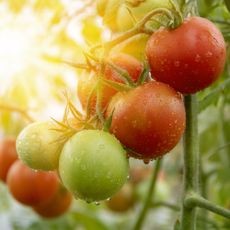 Tomatoes growing in the sun
Tomatoes growing in the sun
Focusing on Popular Edibles
Many home gardeners start with versatile and productive crops like tomatoes, strawberries, and herbs.
- Tomatoes: A garden favorite, tomatoes come in countless varieties, from tiny cherry tomatoes perfect for snacking to large beefsteaks. They need plenty of sun, fertile soil, and consistent watering. Companion planting can also significantly benefit tomatoes, attracting beneficial insects and deterring pests. While some plants are great neighbors, be aware that certain species can actually hinder tomato growth – knowing which ones to avoid is key to protecting your harvest. Growing hydroponic tomatoes is also an excellent soil-free option for year-round indoor harvests.
- Strawberries: These delicious berries require well-drained soil and benefit greatly from mulching, especially for overwintering. If your strawberry plant isn’t producing fruit, common reasons range from insufficient sunlight or water to pollination issues or nutrient deficiencies. Troubleshooting these can help boost your berry yield.
- Herbs: Easy to grow in pots, garden beds, or even hanging baskets, herbs offer fresh flavors for cooking. Many herbs thrive with less attention than fruiting plants and can add beauty and fragrance to your garden space. Creating an herb bundle or bouquet garni from your fresh harvest is a simple way to infuse flavor into your culinary creations.
- Potatoes: Growing potatoes can be fun, even starting from sprouted potatoes you bought at the grocery store. Exploring heirloom potato varieties offers unique flavors and colors compared to common store varieties.
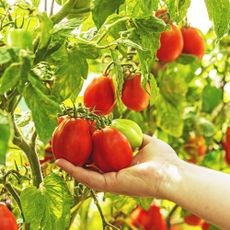 Gardener inspects tomatoes growing on the vine
Gardener inspects tomatoes growing on the vine
Troubleshooting and Harvesting
Even with the best care, gardeners encounter challenges. Strawberry plants not producing or tomato plants developing issues like blossom end rot are common frustrations. Learning to identify the causes, whether environmental stress, nutrient imbalance, or pest/disease pressure, is part of the gardening process. Implementing preventative measures, like ensuring adequate calcium for tomatoes or choosing the right planting companions, can significantly reduce problems.
Harvesting at the correct time ensures the best flavor and yield. Knowing when rhubarb is ready to pick for that perfect tartness, or waiting for tomatoes to reach their peak ripeness, makes all the difference. Regular harvesting also encourages many plants to produce more.
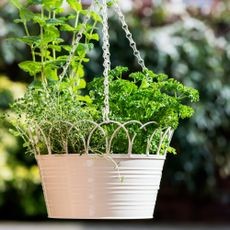 Hanging basket herb garden
Hanging basket herb garden
Conclusion
Growing an edible garden is a rewarding endeavor that brings fresh, healthy food directly to your table. By understanding the fundamentals of planning, planting, care, and troubleshooting, you can cultivate a space that provides bountiful harvests and immense satisfaction. From selecting the right location and preparing your soil to nurturing specific plants like tomatoes and strawberries and knowing when to harvest, each step contributes to your success. Remember that gardening is a continuous learning process, filled with experiments and discoveries.
To support your gardening journey, explore the range of high-quality organic products available from Biogarden.asia. Their selection of soil amendments, natural fertilizers, and plant care essentials are designed to help your edible garden thrive, ensuring you can enjoy the fruits (and vegetables, and herbs!) of your labor. Start small, learn as you go, and savor the incredible taste of homegrown food.
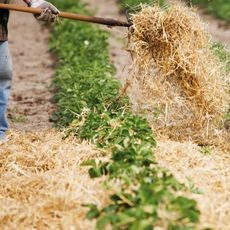 Farmer mulching strawberry field with straw
Farmer mulching strawberry field with straw
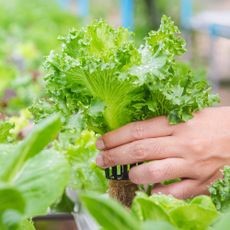 Growing hydroponic lettuce
Growing hydroponic lettuce
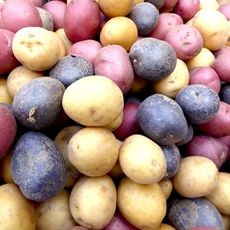 heirloom potatoes with mixed colors
heirloom potatoes with mixed colors
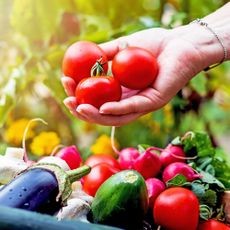 Harvesting homegrown tomatoes and adding them to basket with other freshly picked vegetables
Harvesting homegrown tomatoes and adding them to basket with other freshly picked vegetables
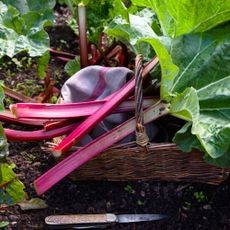 Harvested rhubarb in a wicker basket
Harvested rhubarb in a wicker basket
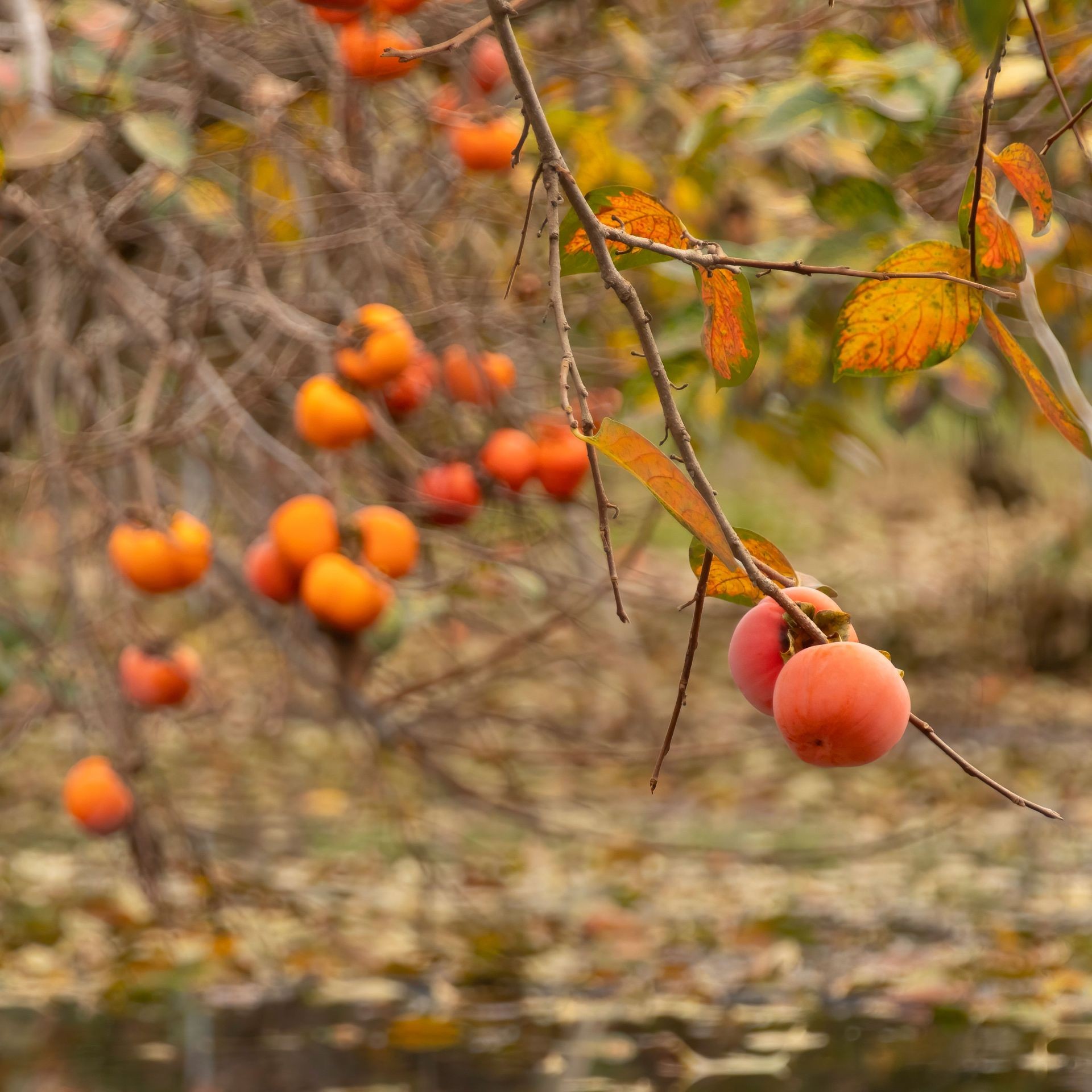 persimmon fruit tree growing near water
persimmon fruit tree growing near water
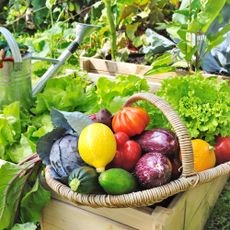 Vegetable harvest in garden on raised beds
Vegetable harvest in garden on raised beds
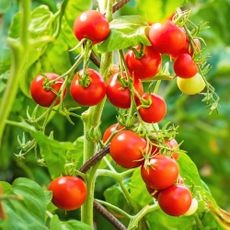 Perfectly ripe cherry tomatoes growing on vine
Perfectly ripe cherry tomatoes growing on vine
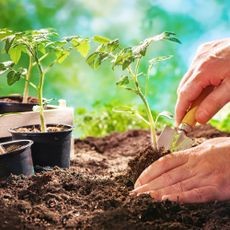 Planting tomato seedlings into prepared soil
Planting tomato seedlings into prepared soil
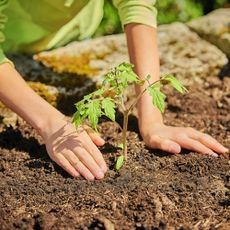 Gardener plants tomato seedling into prepared garden soil
Gardener plants tomato seedling into prepared garden soil
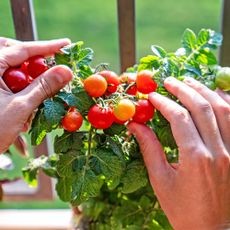 Harvesting cherry tomatoes from indoor plants
Harvesting cherry tomatoes from indoor plants
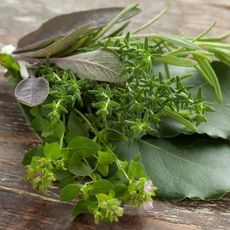 Herb bundle on wooden table
Herb bundle on wooden table
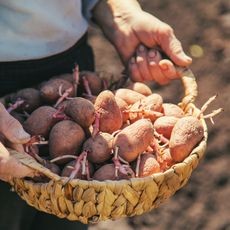 Gardener holding basket of sprouted seed potatoes
Gardener holding basket of sprouted seed potatoes
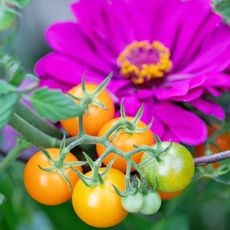 Amethyst zinnia growing with tomatoes on the vegetable plot
Amethyst zinnia growing with tomatoes on the vegetable plot
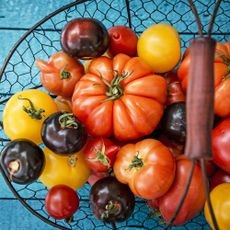 Variety of heirloom tomatoes, freshly harvested in basket
Variety of heirloom tomatoes, freshly harvested in basket



